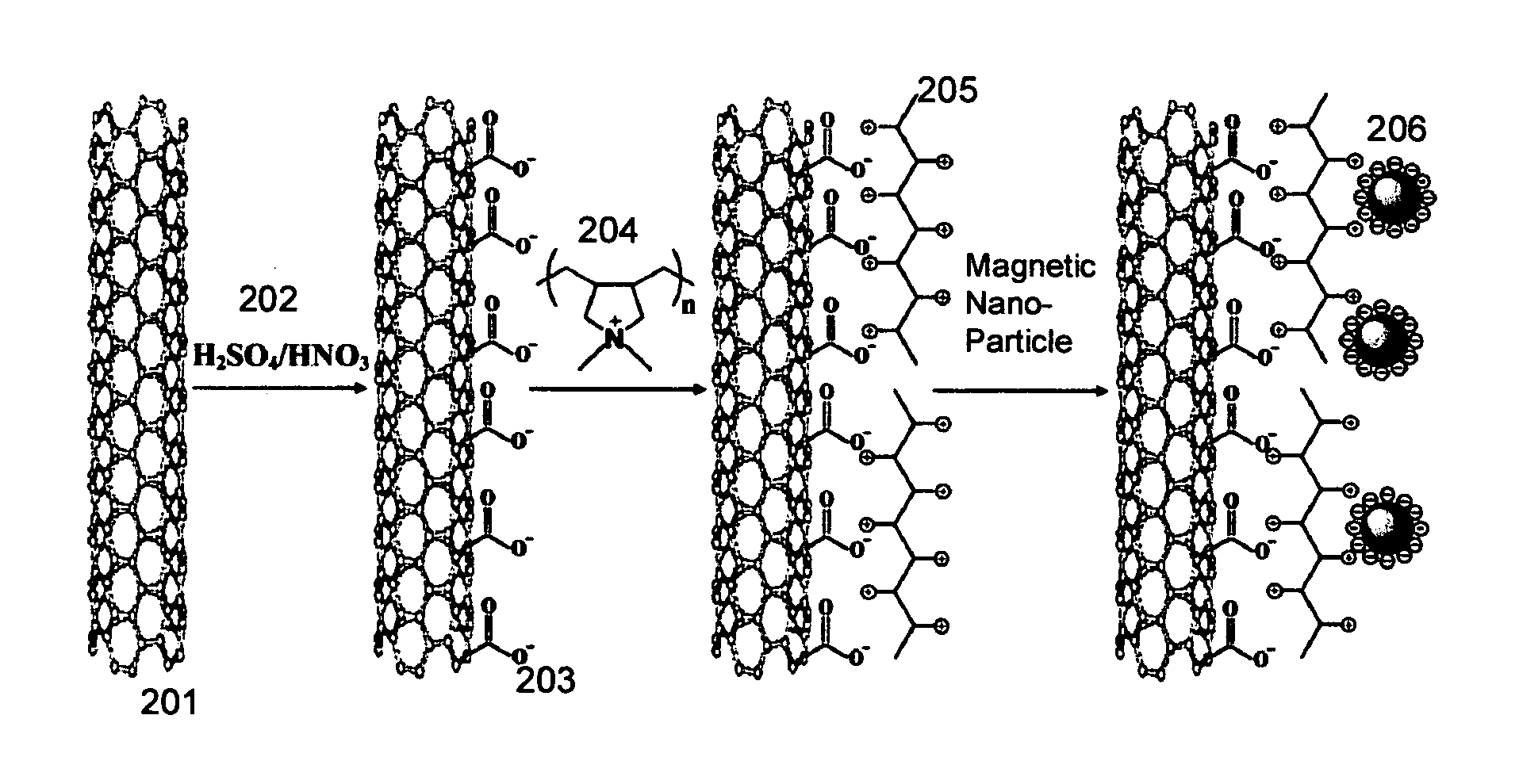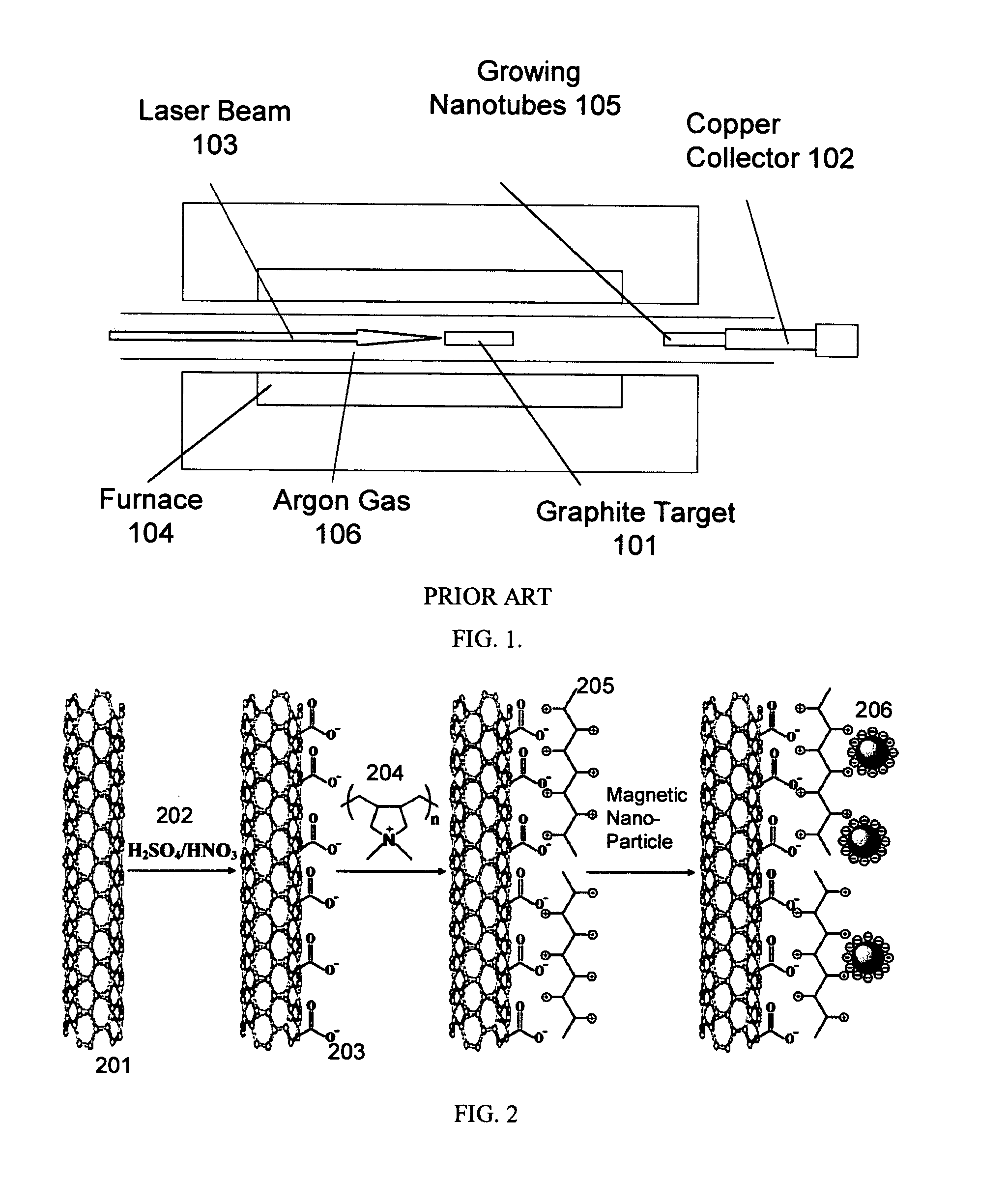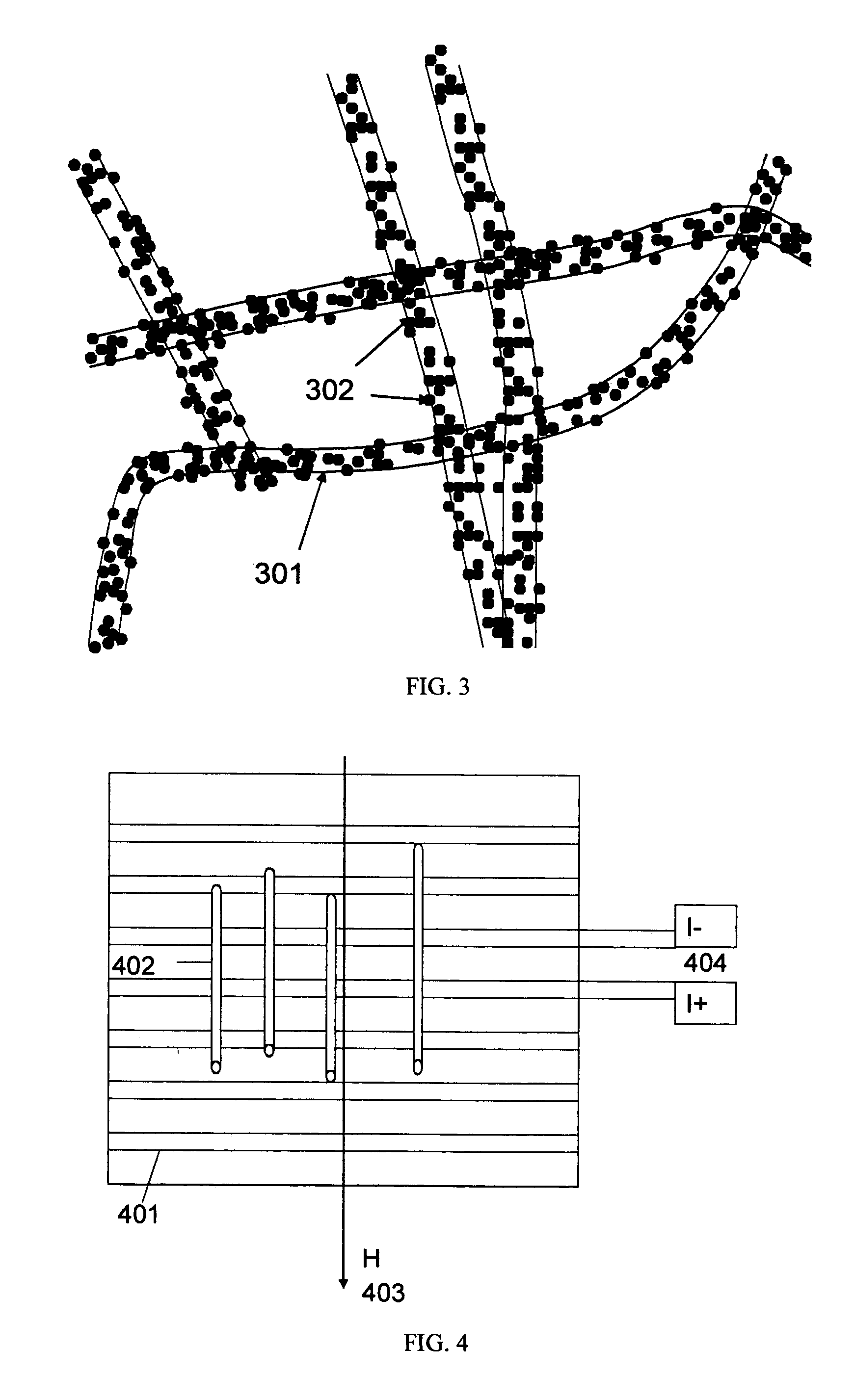Nanotube with at least a magnetic nanoparticle attached to the nanotube's exterior sidewall and electronic devices made thereof
- Summary
- Abstract
- Description
- Claims
- Application Information
AI Technical Summary
Benefits of technology
Problems solved by technology
Method used
Image
Examples
Embodiment Construction
[0025]The purpose of present invention is providing enabling techniques of integrating novel nanotube elements into semiconductor devices, FET device in particular. This is done in a series of process steps, which consist of attaching magnetic nanoparticles to nanotubes, and tailoring the nanotubes to selected size (diameter and length), filtration of nanotube powders, preparing nanotube precursor in aqueous chemicals to form colloidal solutions of proper concentration, dispersing nanotube-containing solutions onto wafer surface, and finally positioning nanotubes at desired locations by magnetic means to complete nanotube device structure. The key to this invention is to provide miniature nanotubes with tangible physical properties, in this case, magnetic properties, so that they can be aligned, filtered, and precisely directed to desired locations for device application. Such processes enable nanotubes to be compatible with typical semiconductor wafer processing technologies.
[0026]...
PUM
 Login to View More
Login to View More Abstract
Description
Claims
Application Information
 Login to View More
Login to View More - Generate Ideas
- Intellectual Property
- Life Sciences
- Materials
- Tech Scout
- Unparalleled Data Quality
- Higher Quality Content
- 60% Fewer Hallucinations
Browse by: Latest US Patents, China's latest patents, Technical Efficacy Thesaurus, Application Domain, Technology Topic, Popular Technical Reports.
© 2025 PatSnap. All rights reserved.Legal|Privacy policy|Modern Slavery Act Transparency Statement|Sitemap|About US| Contact US: help@patsnap.com



